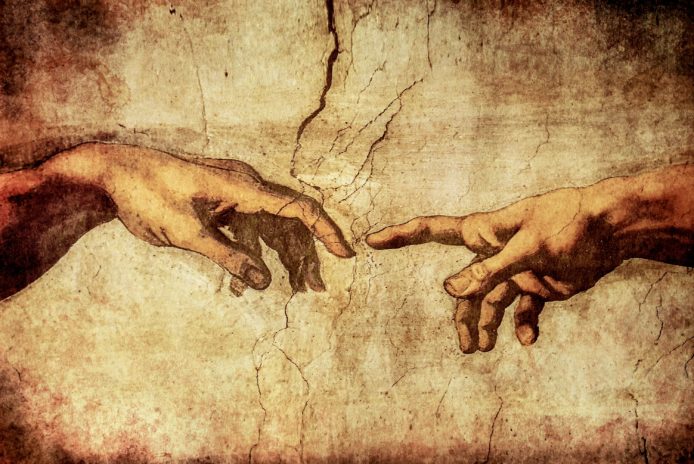Coming to Grips with the Early Church Fathers’ Perspective on Genesis, Part 5 (of 5)
I enjoyed chess during high school. The rules are simple yet the game is exceedingly complex and challenging. Unlike in most games, a direct assault is rarely a good idea. Instead, the best approach is to slowly maneuver your pieces into a strategic position. Only after everything is in place is it time to spring your trap and seize your opponent’s chess pieces.
This chess analogy nicely describes my strategy in reviewing the first chapter of Coming to Grips with Genesis. The purpose of that book is to present a comprehensive defense of modern young-earth creationism. The first chapter deals with the patristic (i. e., early church) view of Genesis. I have been studying this topic for the last five years so I have restricted my analysis to just chapter one.
In the first chapter, author James Mook claims that the early church fathers were young-earth creationists. Over the last four parts of this Today’s New Reasons to Believe series, I have responded to each of Mook’s major arguments.
- Part 1. The early church fathers based their understanding of Genesis on Greek and Latin translations, not the original Hebrew.
- Part 2. The allegorical interpreters (e. g., Origen and Augustine) did have specific scriptural reasons for rejecting a calendar-day view of Genesis 1. In particular, the creation days could not be solar days if the Sun was not created until the fourth day. Moreover, the seventh creation day is not closed out by the “evening and morning” phrase, so it is considered longer than a 24-hour day.
- Part 3. Even the so-called “literalist” fathers often relied on nonliteral modes of interpretation in dealing with the Old Testament, such as typology and numerological association.
- Part 4. The cornerstone of Mook’s proof of young-earth creationism in the early church is a widespread belief among the patristics that human history would last exactly 6,000 years. Ironically, this idea was merely a popular human tradition concerned primarily with eschatology—not creation. This model artificially constrained the age of the earth even though the Bible itself does not require it to be so.
Taken together, these points paint a very different picture from the simple one presented by Mook. To conclude this series, I will address some big picture questions. And, with all of my pieces in place, time to make my move.
Before I do that, I will again mention Robert Bradshaw, whom I introduced in part 1. He presents an excellent summary of the patristic view of Genesis 1–11, which serves as a good reference for this discussion. He approaches the issue from a young-earth creationist perspective, but, unlike Mook, Bradshaw provides a much more complete and balanced picture of the patristic fathers. I will refer to his work because it provides a nice counterbalance between Mook’s work and my own.
Was the age of the earth considered vital to Christian orthodoxy in the early church?
While the days of creation, the age of the earth, and the extent of Noah’s flood were subjects of popular speculation in the early church, they were never treated as critical issues. First of all, not one of these topics was included in any of the early church creeds. In fact, no prominent church doctrinal statement or confessions of faith discussed any of these controversial issues prior to the twentieth century.1
Second, not one of these three issues was ever listed as part of the “rule of faith” (Latin regula fidei), which was a statement of key doctrine. Third, most of the discussion about the age of the earth and the flood occurred as secondary points or illustrations rather than primary topics. The age question was concerned mainly with apologetics, not a literal reading of Scripture. (To be fair, some important works regarding Genesis have been lost, so my statement only applies to the works that still exist.) Fourth, the church was clearly divided on the nature of the creation days, but those rejecting a calendar-day interpretation were never condemned as heretical.
As a matter of contrast, there was only one doctrine related to creation that was considered essential—creation ex nihilo (or “creation out of nothing”). It was explicitly taught by many individuals and included in key creeds and doctrinal statements (as I document here). Creation ex nihilo does not in any way require a recent beginning—only that there was a definite beginning to matter in the finite past. So, the early church fathers clearly required a creationist view but not specifically a young-earth view.
Did any of the early Jewish or Christian writers teach that the days of creation were long periods of time? Or that the earth was older than 10,000 years?
To the best of my knowledge, none of the church fathers taught an old earth. Justin Martyr and Irenaeus are sometimes put forward as teaching that the days of creation were a thousand years each and so holding to a type of day-age view. Further investigation, however, shows that the “day as a thousand years” formula was only applied to post-creation history, not the days of creation themselves (see part 4 of this series). Other people have claimed to even find proponents of the framework hypothesis and gap theory among the church fathers but this is not correct and represents poor scholarship (as discussed in part 1). According to my research, the first people to clearly teach that the earth is old were Sir Isaac Newton and Thomas Burnet in the late seventeenth century. So, on this point, Mook seems correct (and Bradshaw agrees). Nevertheless, that is only part of the story.
It is incorrect to assume that this absence of an early old-earth interpretation represents a definite rejection of the position as unbiblical. It was not rejected, per se, it simply was never considered for the following reasons. First, the fathers’ reliance on Greek and Latin translations of Genesis meant they read Scripture as far more narrow and precise than the text actually is (see part 1 of this series). Second, the creation-week pattern for human history—a popular eschatological tradition—ruled out any possibility of considering a world older than 6,000 years (see part 4). Taken together, these circumstances show that the early presence of young-earth creationism and the absence of an old-earth view resulted from faulty understanding and human tradition rather than a solid interpretation of Genesis.
Were the church fathers young-earth creationists?
There is evidence that at least 12 fathers believed the earth to be less than 6,000 years old in their own time and so, in that limited sense, can be considered young-earth creationists.3 The real question, however, is whether or not this meaningfully supports the claims of Mook and other modern young-earth creationists. The answer to that is a strong “no” for two reasons. The first is that the patristics’ understanding of the age of the earth and the days of creation was driven by a variety of concerns other than Scripture, as I described under the previous question. The second is that modern young-earth creationism is a package that contains a lot more than the simple claims made by the early church fathers. In other words, simply finding a popular belief in a young world among early Christian writers is insufficient to support modern young-earth creationist claims.
To clarify this latter point, it is important to delineate modern young-earth creationism from its ancient counterpart. The most important difference is that the modern variety generally elevates the age of the earth and related issues to the level of Christian orthodoxy—not merely a private interpretation. That is a very marked contrast to the early church. The second distinction is that modern young-earth creationism generally teaches that creature mortality began at the Fall and so was not present in the original creation. In other words, there was no animal death prior to sin being introduced by Adam and Eve.4 Moreover, this issue is usually treated as essential doctrine. Scripture, however, is silent on this point. So it is not surprising that the early church fathers wrote almost nothing on pre-Fall animal death. They certainly didn’t see it as vital doctrine.
While the church fathers wrote little about animal mortality, they were notably divided on the closely related question of whether Adam and Eve were created mortal or immortal (prior to the Fall). Bradshaw, for example, notes that at least four fathers (namely Theophilus of Antioch, Clement of Alexandria, Theodore of Mopsuestia, and Augustine) taught that the first humans were created mortal.5 So, while some components of modern young-earth creationism can indeed be traced back to the earliest days of the church, the most critical ones cannot. In fact, modern young-earth creationism really began in the twentieth century and so is, ironically, newer than old-earth creationism, which appeared near the end of the seventeenth century.
My complete work on this topic is currently unpublished. Inquiries regarding it should be directed to [email protected].
This article is Part 5 (of 5) of “Coming to Grips with the Early Church Fathers’ Perspective on Genesis”.
To access additional parts, please click on a link below:
Part 1 | Part 2 | Part 3 | Part 4 | Part 5
Endnotes
- The closest any important creedal statements come to dealing with the days of creation is one curious statement that God created the world “in the space of six days” found in the Irish Articles (1615) and Westminster Confession of Faith (1647). This phrase only declares the days were real periods of time—not instantaneous—but do not define their duration. It was primarily intended to reject Augustine’s instantaneous creation interpretation. See William S. Barker, “The Westminster Assembly on the Days of Creation: A Reply to David W. Hall,” Westminster Theological Journal, 62 (2000): 113–20.
- Robert I. Bradshaw, Creationism and the Early Church, last updated January 25, 1999, summary, https://www.robibradshaw.com/contents.htm.
- John Millam, “The Genesis Genealogies,” Reasons To Believe, https://www.reasons.org/files/non-staff-papers/The-Genesis-Genealogies.pdf.
- James Stambaugh, “Whence Cometh Death? A Biblical Theology of Physical Death and Natural Evil,” in Terry Mortenson and Thane H. Ury, eds., Coming to Grips with Genesis, (Green Forest, AR: Masters Books, 2008), 373–97.
- Bradshaw, Creationism and the Early Church, table 4.2.
Dr. John Millam
Dr. Millam received his doctorate in theoretical chemistry from Rice University in 1997, and currently serves as a programmer for Semichem in Kansas City.






